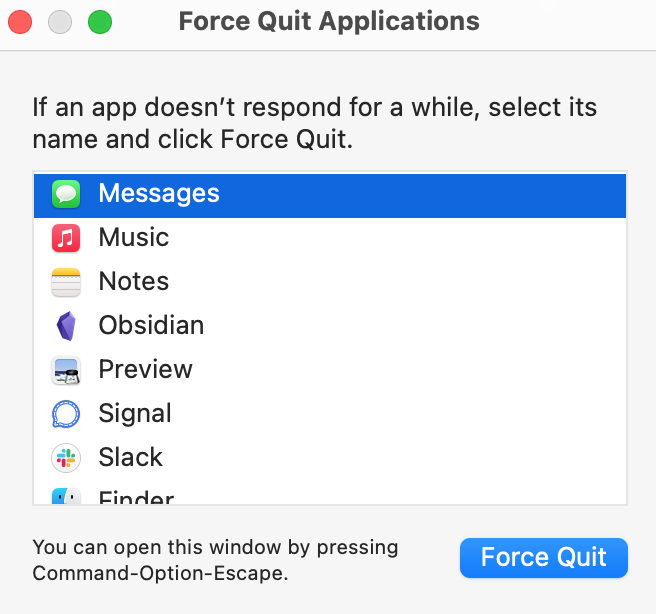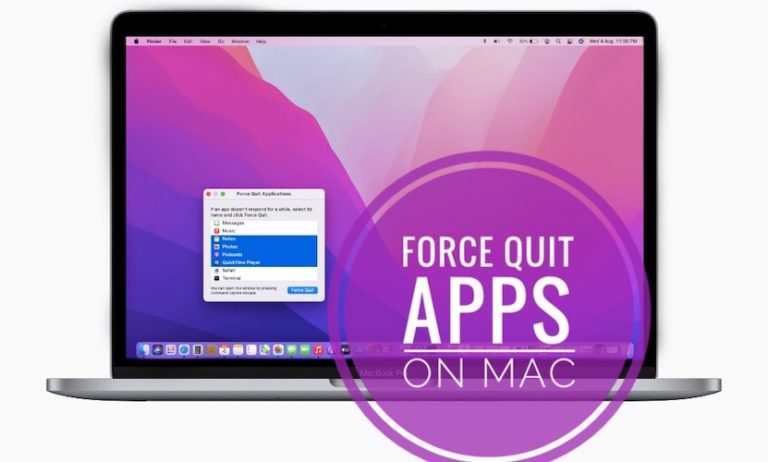

It is, however, a shortened route.Force Quit Mac Applications Force Quit An Active Mac App With Keyboard Shortcut

This procedure is pretty similar to the first one described before. Method 3: Create a Keyboard Shortcut.įor those who prefer to utilise a keyboard shortcut to end an application abruptly, this is a simple procedure to follow. This Activities Monitoring will let you know which programme is causing the problem.
#MAC SHORTCUT TO FORCE QUIT SOFTWARE#
If your web browser isn’t responding, it’s possible that another software on your Mac is causing the problem. This is a great technique to use when you’re not sure which programme is causing issues. Use your keyboard’s Command+Space Bar key combination to bring up the search bar, then type in Activity Monitor to find it. If you’re having difficulties locating the Activity Monitor software, you may utilise Spotlight on your Mac to rapidly locate it. Double-click the app under the ‘Energy Tab.’.Select ‘Activity Monitor’ from the drop-down menu.To access ‘Utilities,’ go to ‘Applications.’.Go to ‘Finder’ in your Dock and click on it.Shut down an app forcefully using Activity Monitor: If you’ve never used Activity Monitor before, it operates quite similarly to Windows’ Task Manager or Linux’s ‘System Monitor.’ In essence, the Activity Monitor gives you complete control over all running programmes and services. Method 2: Shut off an app using Activity Monitor. The ability to resume wherever you got off may be depending just on programme you’re using. The application will now reopen and you may continue working there. The problematic application will be closed as soon as you’ve finished the above procedures. To force a shutdown, click Force Shutdown. To confirm your decision to force-quit the programme, you’ll see a little pop-up window appear.After that, select Force Quit with in program’s upper-right corner to end it immediately. Select the programme that you wish to end abruptly by pressing the Esc key.Select Force Quit in the selection menu.The Apple symbol will appear in the top right-hand corner of your screen.This technique has the advantage of promptly closing the problematic programme regardless of how it behaves. Utilize the Mac menu to terminate an app is a simple and universal solution. You’ll also get plenty of other essential tools for your Mac. Everyday tasks like downloading music or movies via sites such as YouTube, capturing screenshots, recording videos, and improving your Mac’s performance are all included in this bundle. The usage of a clever programme such as Parallels Toolbox may help you clear up unneeded ram just on go and avoid apps from freezing repeatedly. Even if the impact is limited to the one application, it might still be troublesome. Force-closing a Mac may result in data loss or disc corruption if you don’t backup beforehand. Traditional programme closing cleans up everything running all the time and prompts you to save your work before it disappears.


Making Mac shut down the programme solves the issue, but there are risks. Is there less room now? Reduced capacity for multitasking. The more the available storage (memory), the greater the number of active projects you may have. As if RAM were a real workbench, that’s how you should see it. As a result, your system will become sluggish if it has to use all of its available resources to complete the job. The most common cause of frozen apps on a Mac is a shortage of RAM, or, to put it another way, a shortage in computer capacity relative to the amount of programmes you typically have open on the system.


 0 kommentar(er)
0 kommentar(er)
